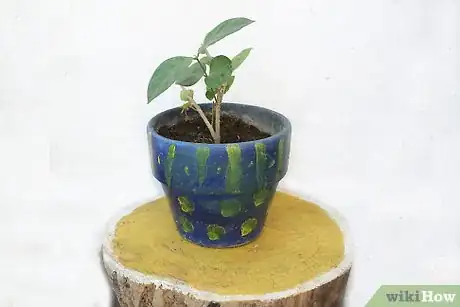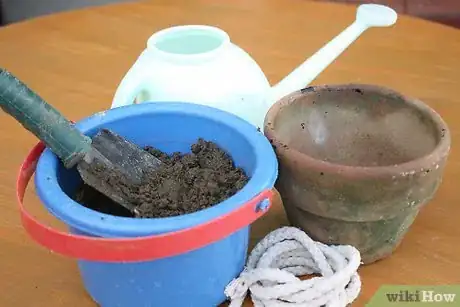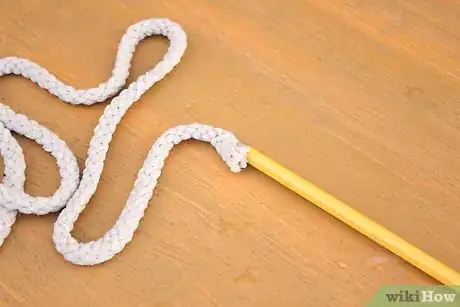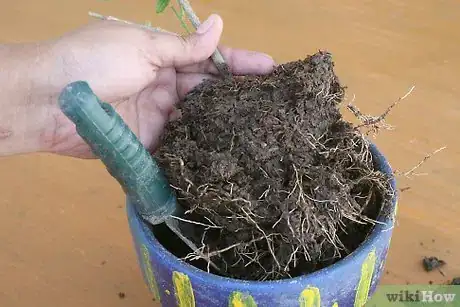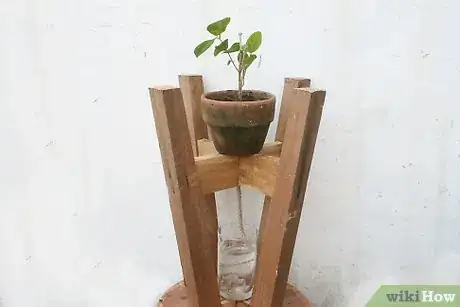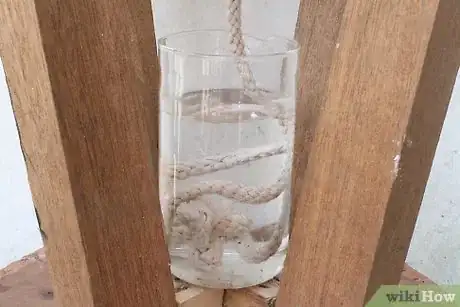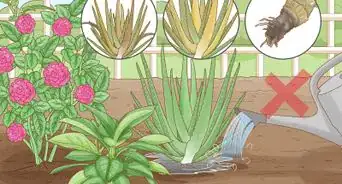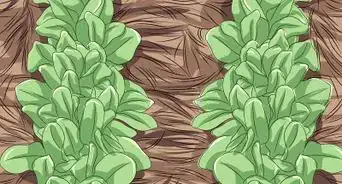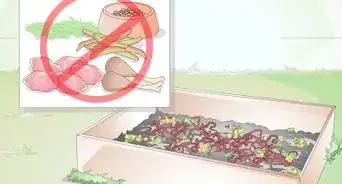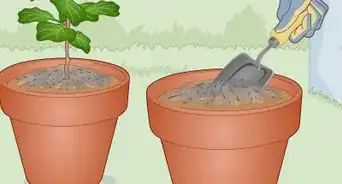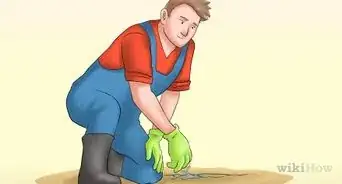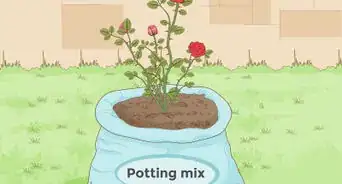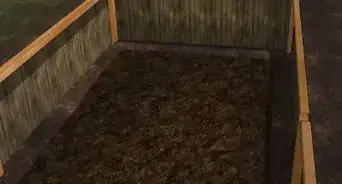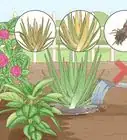This article was co-authored by wikiHow Staff. Our trained team of editors and researchers validate articles for accuracy and comprehensiveness. wikiHow's Content Management Team carefully monitors the work from our editorial staff to ensure that each article is backed by trusted research and meets our high quality standards.
wikiHow marks an article as reader-approved once it receives enough positive feedback. This article received 11 testimonials and 90% of readers who voted found it helpful, earning it our reader-approved status.
This article has been viewed 274,401 times.
Learn more...
Learning to water houseplants may take time as some houseplants require more water than others. If you're planning to go away on vacation, you may not know how to keep them healthy until you return. Gardeners and people with houseplants often learn tricks for keeping their plants healthy when they cannot look after them every day. Wick watering is one of the tricks of that trade. You can use a wick or a shoelace to help your plants water themselves if you have to be gone for a few weeks at a time. Read more to find out how to use wicks to water plants.
Steps
-
1Make sure your plant is already potted in a pot with a drainage hole. If it is not, you should use this opportunity of creating a wick watering system to replant it in a self-draining pot.
-
2Take your plant outside to a workbench or garden shed. You will need to make a small mess in order to set up a plant with wick. If you do not have a workbench, lay down newspapers.Advertisement
-
3Gather extra soil, an extra pot, water and a wick. If you do not have a candle wick, you can use an old shoelace. Your wick can be any small, long piece of cloth that soaks up water.[1]
- Long candle wicks are available in most craft stores for people who make their own candles.
-
4Soak your wick or shoelace and water your house plant. Make a knot with the end of the wick or shoelace.[2]
-
5Stick the sharp end of a pencil through the shoelace or the candle wick. You can also wrap the wick around the pencil. Make sure it is secured and then set it aside for later use.[3]
-
6Lift the plant from its pot. If it is a large plant, you may want to ask a friend to help you, so that you will not destroy the roots.
-
7Stick the pencil with the top of the wick into the root ball of your plant. Thread the bottom of the shoelace or wick through the draining hole in the pot.[4]
- If you do not have a self-draining pot, use this opportunity to plant the plant you have just uprooted into a self-draining pot. Place some soil near the bottom to replace any soil lost from the original pot.
-
8Place the plant back into its pot with the wick now connected. Take care when you move the plant from now on. You do not want to tug hard and remove the wick.[5]
-
9Place the plant above a vessel of water. For example, you can place it on a slatted board and let the wick fall into a pitcher of water. The water will climb up the wick to feed the plant.[6]
- This step will be slightly different for everyone, depending upon where you plan to place your plant while you are gone. You may use a drainage basket or a shelf inside, where the wick can fall unencumbered into the vessel.
-
10Fill the vessel with 16 to 32 oz. (0.47 to 0.9 L) of water before you plan to leave and the water should be wicked up into the roots of the plant while you are away. Since each plant requires a different amount of water, the root ball will soak up the water when it is in need.
Community Q&A
-
QuestionWhere do I purchase the wicks?
 Community AnswerYou can buy them from local stores. I would think you would be able to find individual wicks near oil candles.
Community AnswerYou can buy them from local stores. I would think you would be able to find individual wicks near oil candles. -
QuestionHow far up to surface of the soil in pot do I run the wick?
 Community AnswerCapillary action becomes sluggish after you exceed 33 centimeters, ensure you keep it at 15 to 20 centimeters.
Community AnswerCapillary action becomes sluggish after you exceed 33 centimeters, ensure you keep it at 15 to 20 centimeters. -
QuestionHow do I use plastic containers with a wick to water plants?
 Community AnswerYou can use 2 liter plastic soda bottles for wicking. Cut 1/3 of the top off. Flip the top upside down and invert into larger section. Top part is your pot and bottom is your water vessel. Insert wick. I add a small piece of coffee filter doubled to hold in the soil. Insert soaked wick and soil/plant. Fill your vessel with water.
Community AnswerYou can use 2 liter plastic soda bottles for wicking. Cut 1/3 of the top off. Flip the top upside down and invert into larger section. Top part is your pot and bottom is your water vessel. Insert wick. I add a small piece of coffee filter doubled to hold in the soil. Insert soaked wick and soil/plant. Fill your vessel with water.
Things You'll Need
- Candle wick or old shoelace
- Water
- Pot with drainage hole
- Soil
- Newspapers
- Water pitcher
References
- ↑ https://makezine.com/2009/07/17/how_to_create_a_simple_housepl/
- ↑ https://lifehacker.com/use-cotton-strips-for-no-fuss-houseplant-watering-5620882
- ↑ https://www.youtube.com/watch?v=Y_1m1NjWLxA
- ↑ https://makezine.com/2009/07/17/how_to_create_a_simple_housepl/
- ↑ https://www.goodhousekeeping.com/home/gardening/a20720951/how-to-water-plants-while-away/
- ↑ https://www.goodhousekeeping.com/home/gardening/a20720951/how-to-water-plants-while-away/
